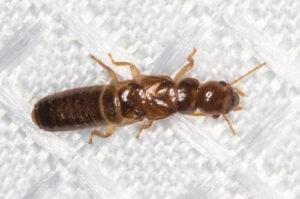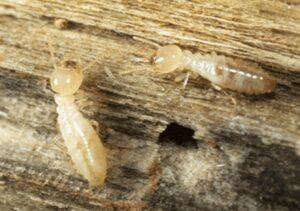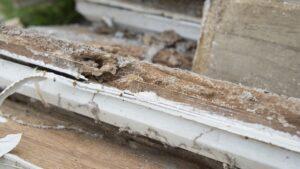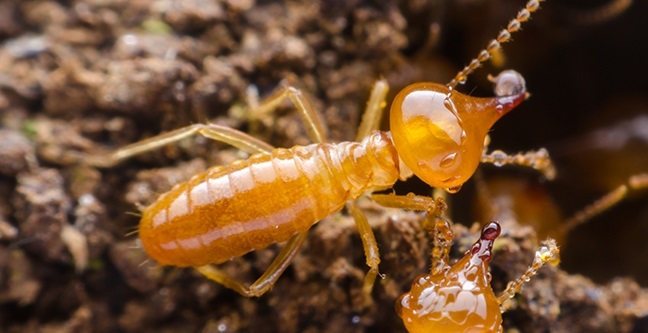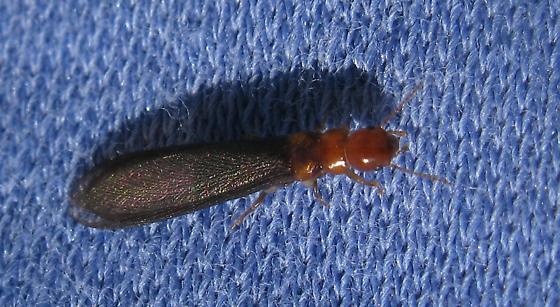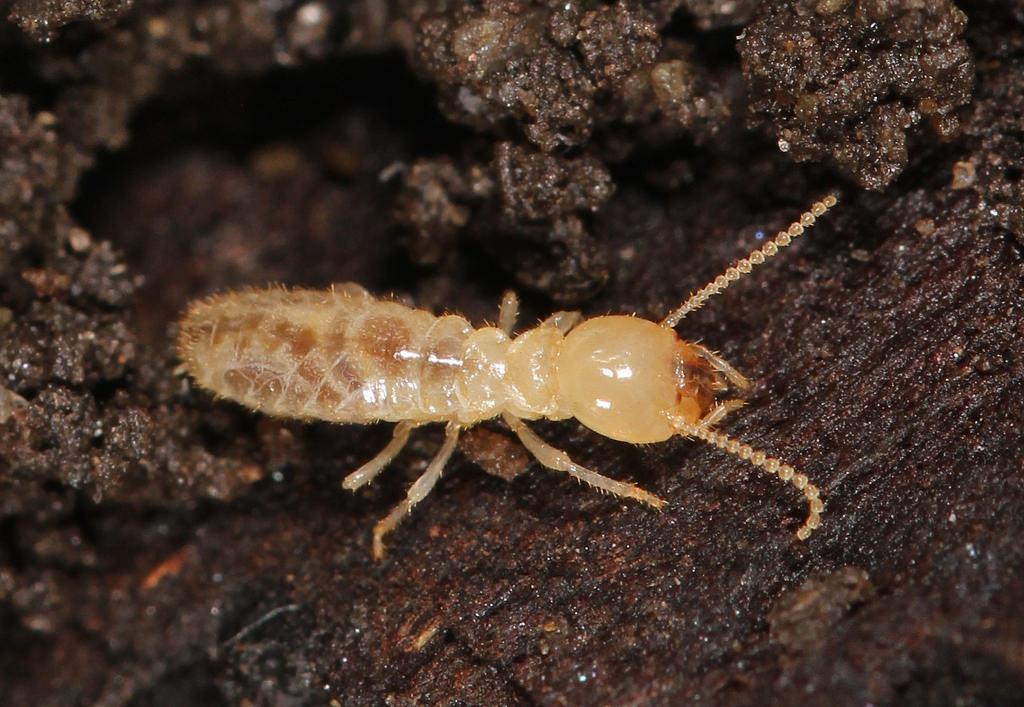Drywood Termites (Kalotermitidae)
Updated on
01/12/2022The members of the family Kalotermitidae are known as drywood termites. The structural pests thrive in hard, dry wood in homes and don’t require any contact with the soil. Their swarming season is late summer to fall.
Scientific Classification
- Class:Insecta
- Order:Blattodea
- Superfamily:Blattoidea
- Family:Kalotermitidae
Conservation Status
Description and Identification
The drywood termites in a colony are divided into the immature (nymph), soldier, and swarmer (reproductive or alate) castes. The swarmers have two pairs of wings of the same size. The front pair has three or more patterns of heavy-well-pigmented veins in their outer parts. As they shed their wings quickly after swarming, most dead swarmers don’t have their wings attached.
Drywood termites have big mandibles with teeth, and their pronotum is as wide or wider than their head. Their color is creamy white to light brown, and their size is 3/8 – 1 inch (9.5-25.4 mm). They have thick, oval waists with short legs, wings of equal length, and straight antennae.
Distribution: Along the Pacific coastal region in the US, extending into the deserts of southern California and the Central Valley.
Habitat: Colonies are made in wood and occasionally in other cellulose material that need not have any connection with the ground. They are often found in attic wood, banisters, picture frames, furniture as well as structural wood.
Do They Bite/Sting: No.
Lifespan: 10-12 years.
Predators: Birds, reptiles, toads, insects (primarily ants), etc.
Behavior and Characteristics
Diet
They derive their nutrition from cellulose material, including dried pants, books, furniture, and structural wood. They make their way into wood and extract the water they require from the ingested wood.
Nest-building
They form new colonies by making their way into wood. Their nests are erratic, smooth galleries mostly built against the grain of the wood. Small tunnels connect the separate chambers. Colonies can have up to 2500 members. Drywood termites also create small ‘kick-out’ holes in the wood to push their fecal pellets or frass out. In the process, they leave behind mounds resembling fine grains of sand or sawdust.
Life Cycle
1. Egg Stage
The queen begins laying eggs after mating.
2. Nymph Stage
The soft, white-bodied nymphs pass through 4-7 instars before becoming adults. They do all the work of the colony, like tending to the nest, foraging, etc.
3. Adult Stage
The nymphs develop in swarmers or soldiers. In late August to early September, the reproductives develop wings and swarm from the nest through the kick-out holes. A pair of male and female swarmers (king and queen) mate and start a new colony in a suitable wood habitat. The wingless soldiers, on the other hand, protect and defend the colony against intruders.
Comparison with Similar Species
Subterranean Termite
Subterranean termites live in the soil, while drywood termites live in sound, dry wood above the ground.
Dampwood Termite
Unlike their drywood cousins, dampwood termites live in damp wood and require high humidity levels for survival.
Unlike drywood termites, Formosan termites live in soil and enter the wood in contact with the ground by building mud tubes.
Getting Rid of Drywood Termites
Drywood termites cause substantial damage to wood within just a few months of colonization. Effective treatment can be done by sealing all cracks and crevices that could be possible access points to wood. Early detection is the key to getting rid of the pests. So a watchful eye should be kept for signs of an infestation like discarded wings and termite droppings.
Treating wood with sufficient concentrations of compounds that contain boron or silica aerogel prevents the termites from penetrating wood. They can be killed by injecting infested wood with pesticides. But by far, tent fumigation has proved to be the most effective way to control them.
Yes, they are attracted to lights.
They enter homes when the swarmers directly fly to the wood through unscreened attic or foundation vents and cracks around floor frames, window frames, roof sheathing or soffits.
Drywood termites mostly swarm during the night.
Drywood termite colonies spread slowly. It takes at least 5.5 years for an infestation to become noticeable after establishing the nest. That is when swarmers are produced.
They originate from dry wood habitats, usually suburban developments, forests, and woodshops.
Source
lloydpest.com, inaturalist.ca, westernexterminator.com, termitespecialist.sg, cdn.branchcms.com, crittergitter.com





